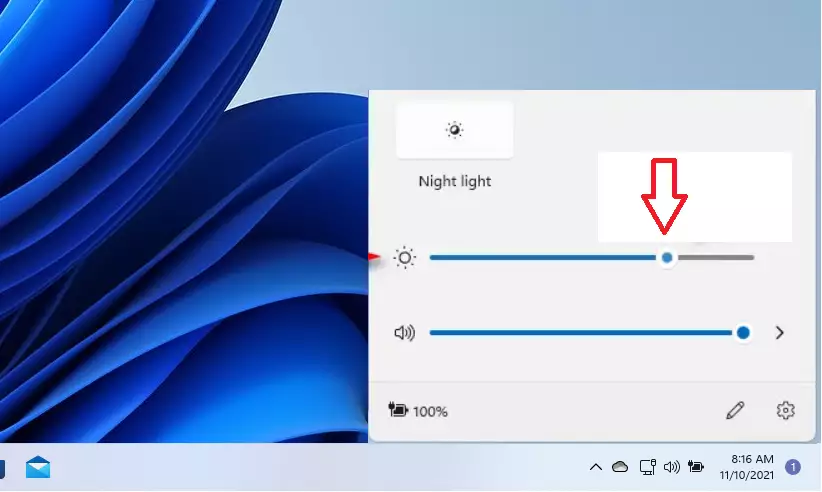This article explains how to change the screen brightness in Windows 11.
Windows automatically adjusts screen brightness for some laptops and computers based on the current lighting conditions. This automatic setting helps make sure your screen is readable wherever you go.
For even more advanced PCs, there might also be an option for Windows to adjust the screen brightness and contrast based on the content displayed on your built-in screen.
These automatic brightness settings might not be useful for using an external monitor. For an external monitor, you may have to use the buttons on the monitor itself to adjust the Brightness.
Windows 11 comes with a brightness slider that appears in Quick Settings. You can also find the brightness slider in the Windows Settings app by clicking the Start menu ==> Windows Settings > System > Display, then moving the Change brightness slider to adjust the Brightness.
How to adjust the screen brightness in Windows 11
As mentioned above, Windows allows for automatic screen brightness-based lighting and content displayed on the screen. If you’re using an external monitor, you may have to adjust the Brightness by using the buttons on the monitor.
If these automatic settings above do not work well in your environment, you can turn them off and manually change the screen brightness in Windows 11.
The steps below show you how.
To adjust the screen brightness in Windows 11, select the Network (WiFi) icon on the right side of the taskbar and then move the Brightness slider to adjust the Brightness.
First, click the Quick Settings button in your taskbar, a hidden button located where you see your WiFi, Speaker, and Battery icons in the far-right corner.

On the pop-out window, locate the brightness slider and then move the Brightness slider to adjust the Brightness.

The brightness slider can also be adjusted from the Windows Settings app. To do that, click on the Start button ==> Windows Settings ==> System ==> Display, under Brightness & color, and move the Change brightness slider to adjust the Brightness.

That should do it!
Conclusion:
- Windows 11 offers both automatic and manual options for adjusting screen brightness.
- The brightness slider in Quick Settings and Windows Settings provides easy access to make adjustments.
- For external monitors, use the physical buttons on the monitor to change brightness settings.
- Turning off automatic brightness adjustments can help resolve display issues in varying environments.
- Regularly check and adjust your screen brightness for optimal viewing comfort in different lighting conditions.

Leave a Reply Cancel reply